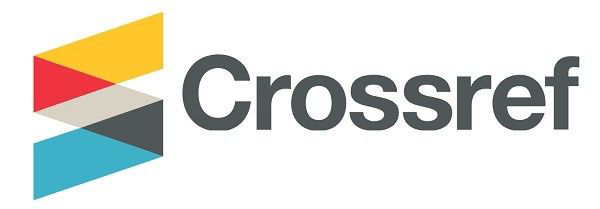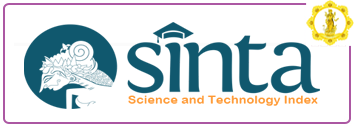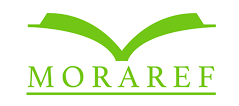Kualitas Pembelajaran Mahasiswa Selama Kuliah Online
DOI:
https://doi.org/10.25078/jpm.v7i1.2099Keywords:
Quality, Online, Learning MediaAbstract
Between the world of education and technology cannot be separated because these two sides are interrelated, student learning can be done online and offline by looking at the situation and conditions. The abilities and limitations they have are also different, so there is a need for a policy by dividing the zones in implementing online lectures based on the quality of the internet network owned by each region where the student comes from. The quality of the learning process can be seen from the quality of the lecturers who teach and the learning media used, especially in online learning everything has to adjust. The problem of an unstable internet network and lecturers who are not fully ready to teach online are the main problems in online learning. So that is the importance of dividing 3 zones for the application of online lectures, zone 1 network is strong and stable can study online, zone 2 network is less strong and stable, online and offline lectures and zone 3 networks are not yet available so offline lectures are conducted
Downloads
References
Barandiaranâ€Galdós, M., Barrenetxea Ayesta, M., Cardonaâ€RodrÃguez, A., José Mijangos del Campo, J., & Olaskoagaâ€Larrauri, J. 2012. What do teachers think about quality in the Spanish university? Quality Assurance in Education, 20(2), 91–109.
Bawden, R., & Zuberâ€Skerritt, O. 2002. The concept of process management. The Learning Organization, 9(3), 132–139.
Blessinger, P., & Wankel, C. 2013. Creative Approaches in Higher Education: An Introduction to Using Classroom-Mediated Discourse Technologies. Cutting-Edge Technologies in Higher Education, 3–16
Buckler, B. 1998. Practical steps towards a learning organisation: applying academic knowledge to improvement and innovation in business processes. The Learning Organization, 5(1), 15–23
Crystal Fulton, 2020. Collaborating in online teaching:inviting e-guests to facilitatelearning in the digital environment. Information and Learning Sciences.
Dealtry, R. 2009. The design and management of an organisation’s lifelong learning curriculum. Journal of Workplace Learning, 21(2), 156–165
Docherty, P., Kira, M., & (Rami) Shani, A. B. 2009. Organizational development for social sustainability in work systems. Research in Organizational Change and Development, 77–144
Erdemci, H., & Karal, H. 2020. Examination of instructors’ experiences for the use of learning analytics. The International Journal of Information and Learning Technology,
Chowdhury, Faieza. 2019, Blended learning: how to flip theclassroom at HEIs in Bangladesh?, Journal of Research in InnovativeTeaching & Learning.
Farrugia, C. (1996). A continuing professional development model for quality assurance in higher education. Quality Assurance in Education, 4(2), 28–3
Fredberg, T., Norrgren, F., & (Rami) Shani, A. B. 2011. Developing and Sustaining Change Capability VIA Learning Mechanisms: A Longitudinal Perspective on Transformation. Research in Organizational Change and Development, 117–161.
Hammerness, K., & Klette, K. 2015. Indicators of Quality in Teacher Education: Looking at Features of Teacher Education from an International Perspective. International Perspectives on Education and Society, 239–277
Jian, Q. 2019. Effects of digital flipped classroom teaching method integrated cooperative learning model on learning motivation and outcome. The Electronic Library, 37(5), 842–859
Khalsiah, Nur Asma and Marina. 2018. The Efforts of Improving the Professionalism of Lecturers towards the Presentation and Change of KKNI within the University Environment in Aceh. Emerald Reach Proceedings Series Vol. 1 pp. 19–25
Lin, P., Krishnan, S., & Grace, D. (2013). The Effect of Experience on Perceived Communication Skills: Comparisons between Accounting Professionals and Students. Advances in Accounting Education, 131–152
Liu, J., Wang, W., & Cao, K. (2011). Leader political skill and team performance: a moderated mediation model. Nankai Business Review International, 2(1), 5–22
Macarov, D. (1988). Quitting Time: The End of Work. International Journal of Sociology and Social Policy, 8(2/3/4), 1–181
Mattah, P. A. D., Kwarteng, A. J., & Mensah, J. 2018. Indicators of service quality and satisfaction among graduating students of a higher education institution (HEI) in Ghana. Higher Education Evaluation and Development, 12(1), 36–52
Naeve, A., Sicilia, M., & Lytras, M. D. 2008. Learning processes and processing learning: from organizational needs to learning designs. Journal of Knowledge Management, 12(6), 5–14.
Nayar, B., & Koul, S. 2020. Blended learning in higher education: a transition to experiential classrooms. International Journal of Educational Management
Nayar, Burna and Surabhi Koul. 2020. The journey from recallto knowledgeA study of two factors–structured doodlingand note-taking on a student’s recall ability. International Journal ofEducational Management Vol. 34 No. 1, pp. 127-138
Nkhoma, C. A., Thomas, S., Nkhoma, M. Z., Sriratanaviriyakul, N., Truong, T. H., & Vo, H. X. (2018). Measuring the impact of out-of-class communication through instant messaging. Education + Training, 60(4), 318–334.
Meixner, W. F., Bline, D., Lowe, D. R., & Nouri, H. (2009). An examination of business student perceptions: the effect of math and communication skill apprehension on choice of major. Advances in Accounting Behavioral Research, 185–200
Patel, N. V. 1995. Application of soft systems methodology to the real world process of teaching and learning. International Journal of Educational Management, 9(1), 13–23
Pals Svendsen, L. 2012. How Social Media Enhanced Learning Platforms Challenge and Motivate Students to Take Charge of their Own Learning Processes. Increasing Student Engagement and Retention Using Social Technologies, 57–88.
Quinn, R. E., Heynoski, K., Thomas, M., & Spreitzer, G. 2014. Co-Creating the Classroom Experience to Transform Learning and Change Lives. Research in Organizational Change and Development, 25–54.
Raza, A., & Sohaib Murad, H. 2014. Learning in plural cultural context. Journal for Multicultural Education, 8(1), 2–12.
Setiawan, Rony., Ariesya Aprillia and Nonie Magdalena, 2020, Analysis of antecedent factors inacademic achievement andstudent retention. Asian Association of OpenUniversities Journal Vol. 15 No. 1, 2020 pp. 37-47
Sztejnberg, A., & Finch, E. F. 2006. Adaptive use patterns of secondary school classroom environments. Facilities, 24(13/14), 490–509.
Suci, afred. 2017. Penjaminan mutu perguruan tinggi : dilema politik organisasi dan urgensi penggunaan profesional eksternal. Jurnal Penjaminan Mutu. Volume 3 Nomor 2 Agustus pp 215-222 pp.
Thom, M. 2017. Arts entrepreneurship education in the UK and Germany. Education + Training, 59(4), 406–426
Tóth, Z. E., Andor, G., & Ãrva, G. 2017. Peer review of teaching at the Budapest University of Technology and Economics Faculty of Economic and Social Sciences. International Journal of Quality and Service Sciences, 9(3/4), 402–424
Voss, R., & Gruber, T. 2006. The desired teaching qualities of lecturers in higher education: a means end analysis. Quality Assurance in Education, 14(3), 217–242
Voss, R. 2009. Studying critical classroom encounters. Quality Assurance in Education, 17(2), 156–173
Wardoyo, Cipto., Aulia Herdiani., Nurdian Susilowati., Muhammad Syahril Harahap. 2019. Professionalism andprofessionalization of early stageteachers in higher education Journal of Applied Research inHigher Education.
Widayat, Prama. 2018. Between cost chep prices and increasing high quality educational university in pekanbaru city. Jurnal Penjaminan Mutu. Volume 4 Nomor 1 Februari pp. 67-75.
Widayat, Prama. 2018. Peran akreditasi dalam menarik minat mahasiswa memilih perguruan tinggi swasta bermutu di Kota Pekanbaru. Jurnal Penjaminan Mutu. Volume 4 Nomor 2 Agustus pp. 99-107
Widayat, Prama. 2020. Persepsi mahasiswa terhadap mutu internal Fakultas Ekonomi Universitas Lancang Kuning. Jurnal Penjaminan Mutu. Volume 6 Nomor 1 Februari pp. 99-107
Wilkin, C. L., Rubino, C., Zell, D., & Shelton, L. M. 2013. Where Technologies Collide: A Technology Integration Model. Cutting-Edge Technologies in Higher Education, 81–106.
White, S. (2008). Using Action Research †To Gauge the Quality of Feedback Given to Student Teachers While on Professional Teaching Practice. Qualitative Research Journal, 8(2), 124–133









